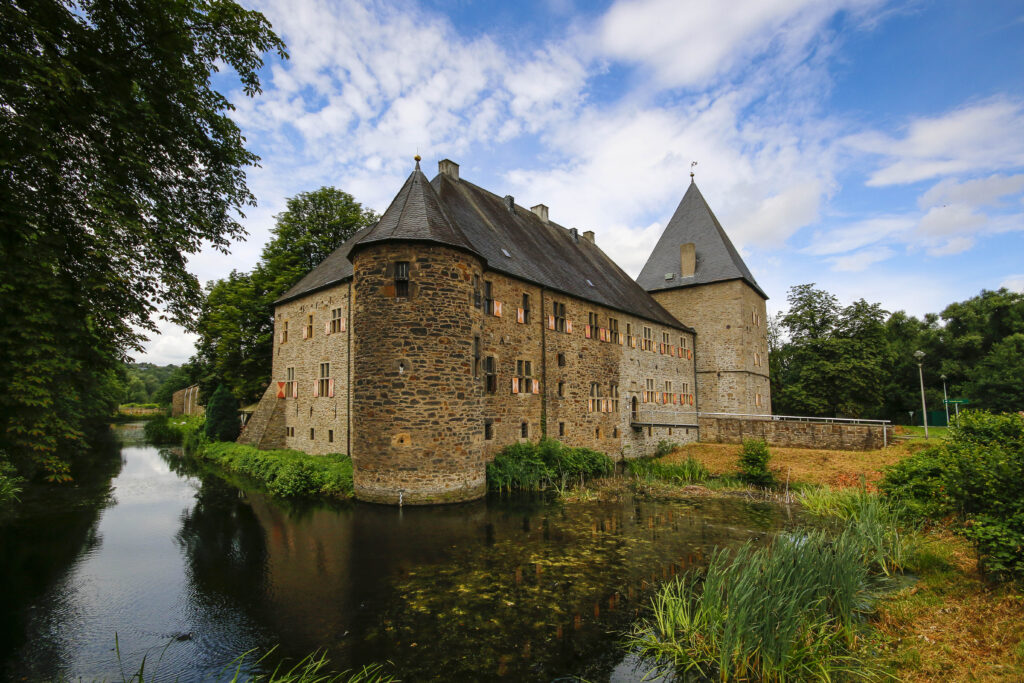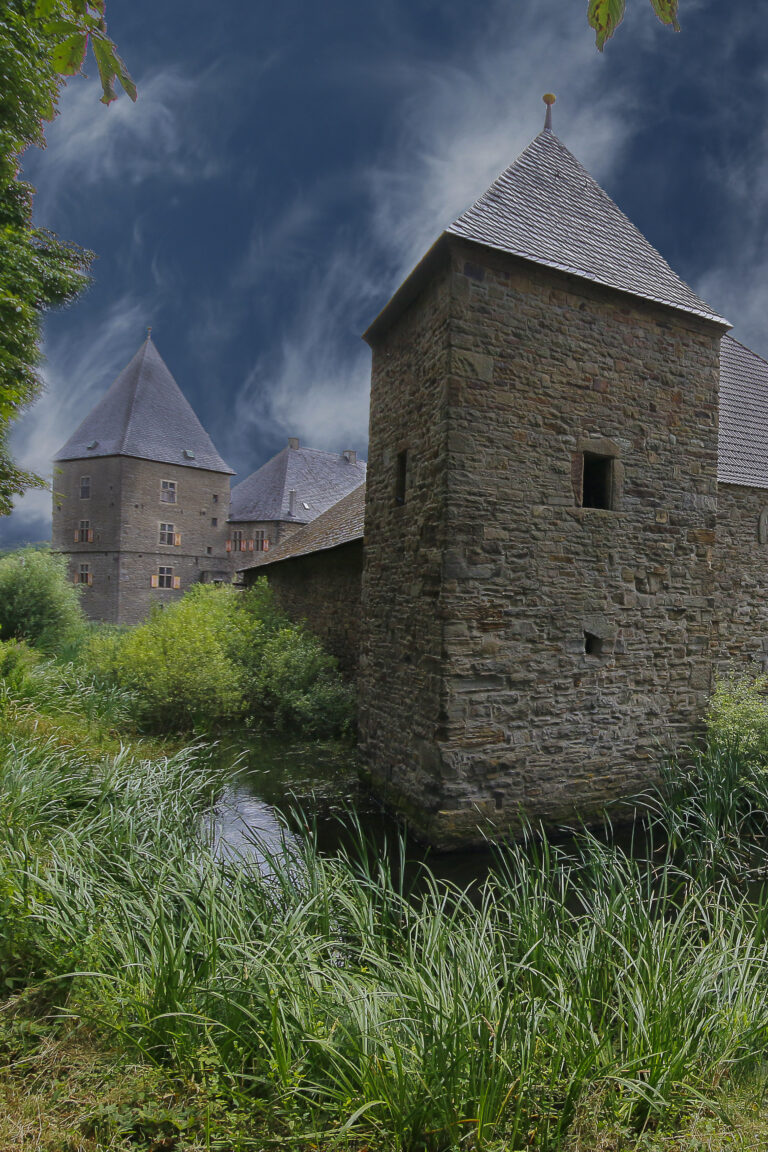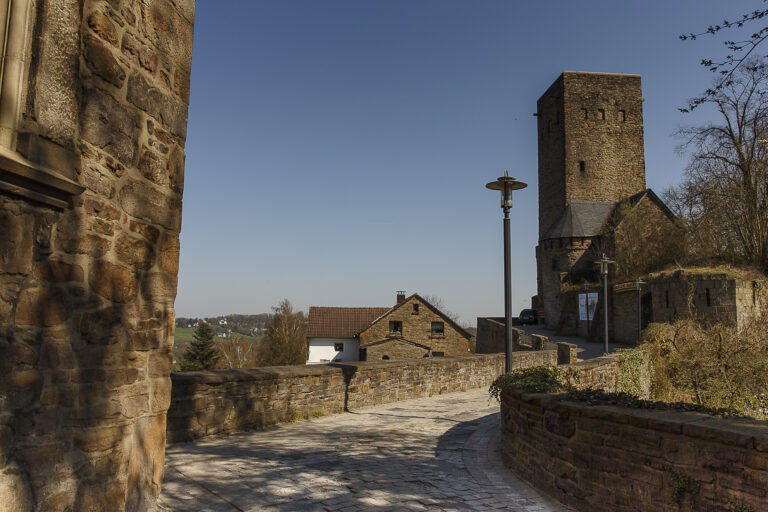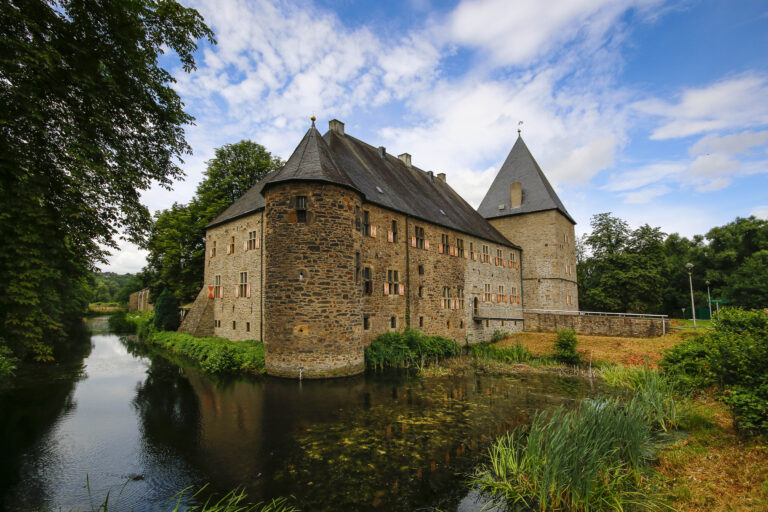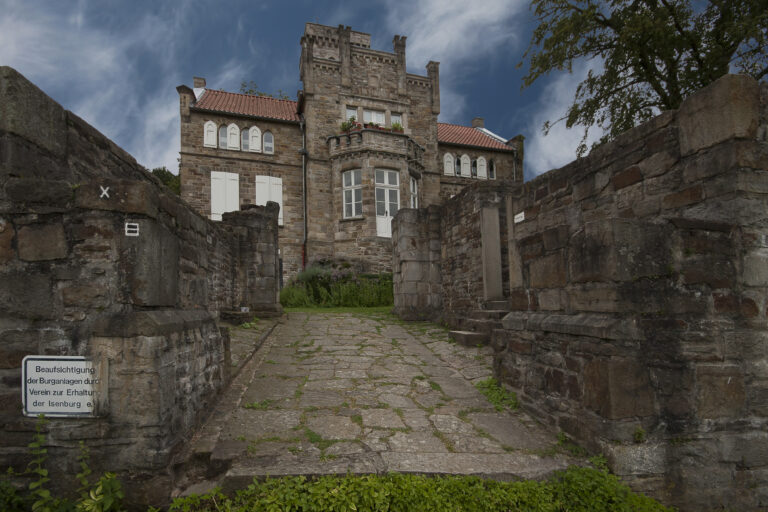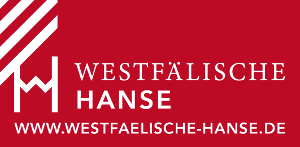Castle Blankenstein
Since the Middle Ages, the present-day district of Blankenstein has developed below the castle.
Numerous half-timbered houses and the permanent historical exhibition in the town museum in the former Blankenstein official buildings are living witnesses to the past.
A particularly beautiful half-timbered ensemble can be found in the "Freiheit" below the castle.
Street names such as "Zu den sieben Hämmern" (At the Seven Hammers) or "Am Seilwerk" (At the Rope Works) are reminiscent of the Puth forge and rope works, which, along with the surrounding collieries, the Henrichshütte in the neighbouring district of Welper and tourism, were among the main types of industry.
By far the most famous Blankenstein woman was the women's rights activist Franziska Mathilde Annecke. A commemorative plaque adorns her house in Vidumestraße.
Numerous forest paths and the 19th century Gethmann Garden with its winding paths below the castle invite you to walk and stroll - after that, several restaurants invite you to stop for a bite to eat.
From the viewing platforms in the Gethmann Garden as well as from the castle tower, you have a magnificent view of the Middle Ruhr Valley, which reflects the very special charm of this unique landscape at any time of year.
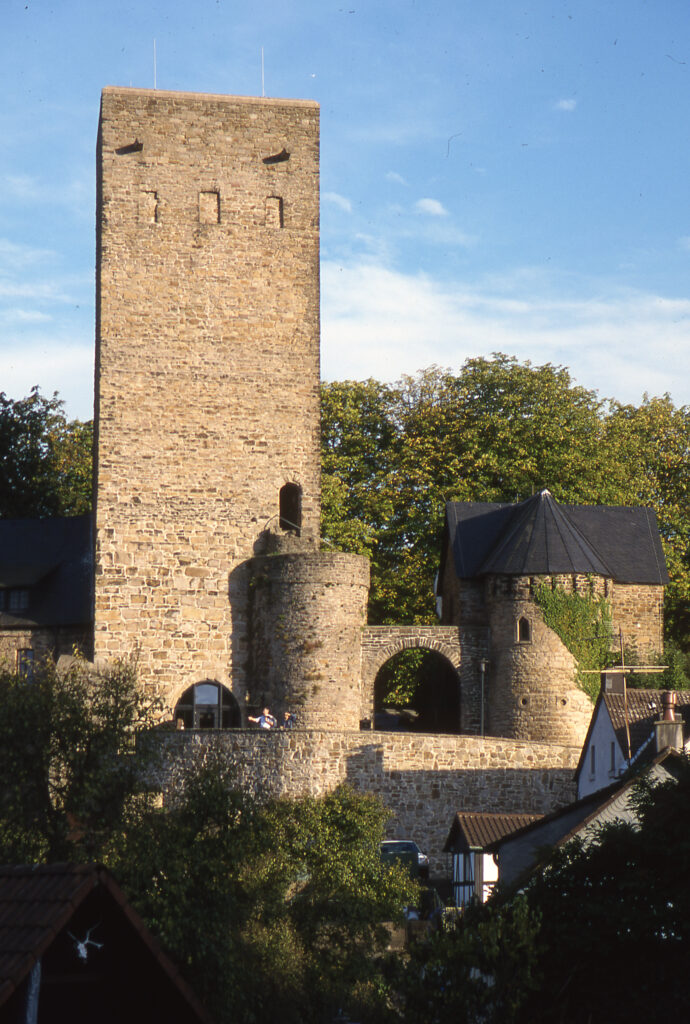
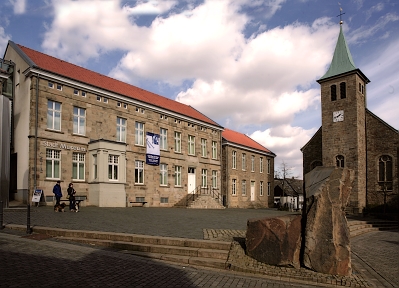
Isenburg
The Isenberg rises out of the Ruhraue with the impressive ruins of Isenberg Castle and beautiful views of the Ruhr valley. Built in 1200 by Count Arnolds von Altena, the 240-metre-long castle is now Hattingen's oldest and most important archaeological testimony to the High Middle Ages and one of the largest castle ruins in Germany. It was almost completely destroyed as early as 1225 after the lord of the castle, Count Friedrich von Isenberg, murdered the Archbishop of Cologne. In 1858, court architect Max Joseph Custodis built the classicist Haus Custodis in the middle of the castle ruins, where the "Verein zur Erhaltung der Isenburg e.V." now runs the castle museum.
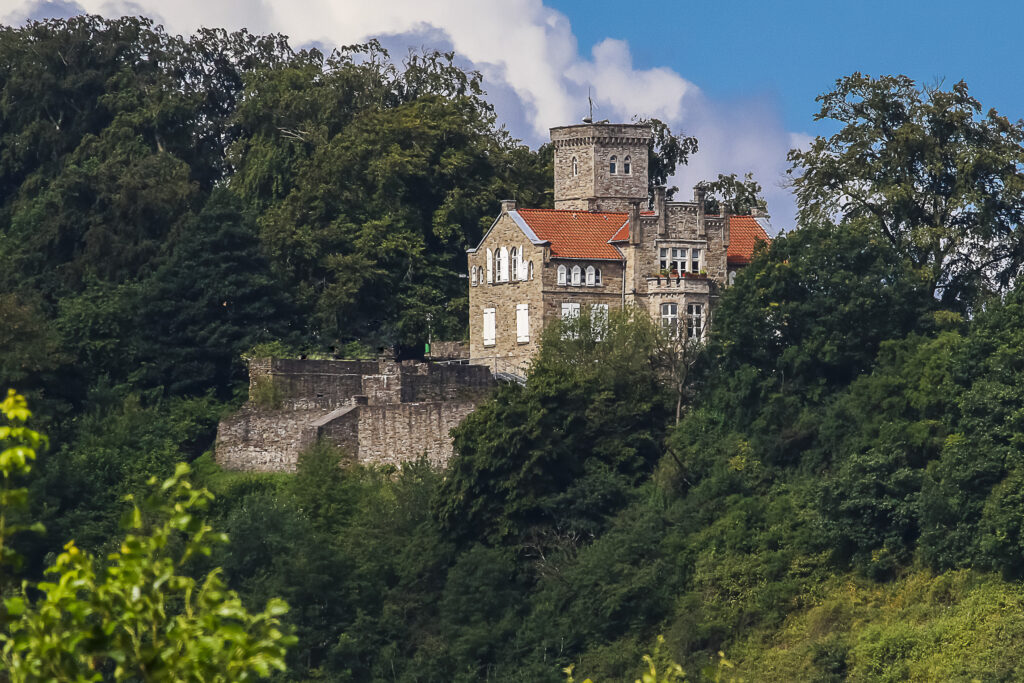
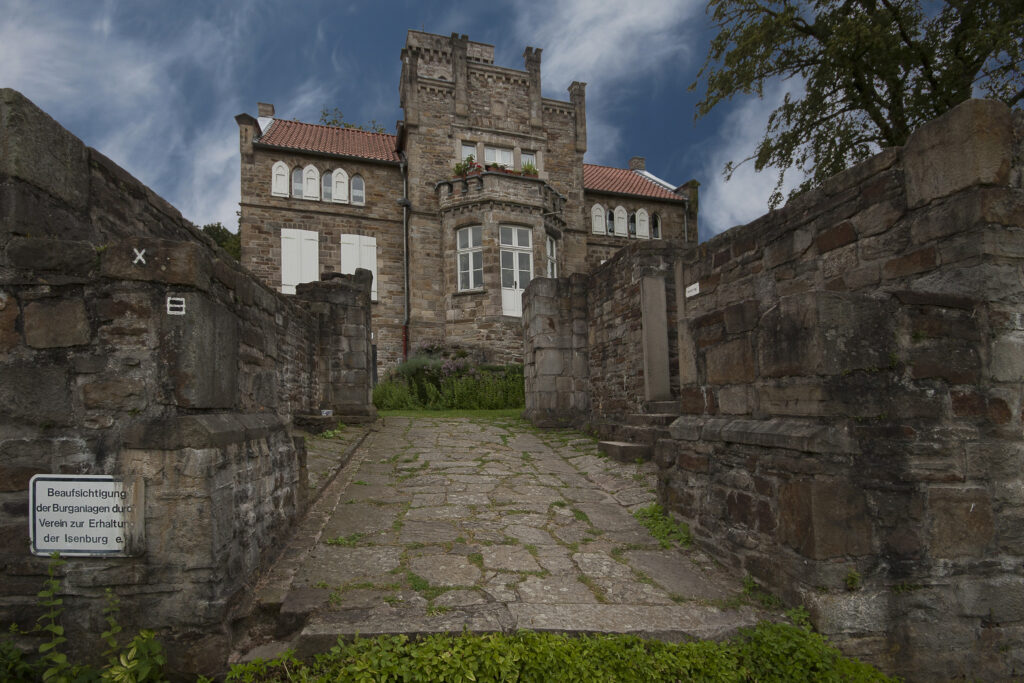
Wasserburg House Kemnade
Not far from Blankenstein Castle, near the Kemnader Reservoir, lies the picturesque 16th/17th century moated castle of Haus Kemnade. The well-preserved castle complex was rebuilt after a devastating fire in 1589 and has a collection of baroque furnishings, including ornate fireplaces and wooden ceiling ornaments. Also discover 1,800 instruments and music boxes from the 16th to 20th centuries in the Grumbt collection of musical instruments, one of Germany's largest collections of money boxes in the Kennade treasury, the farmhouse museum and a bee museum.
